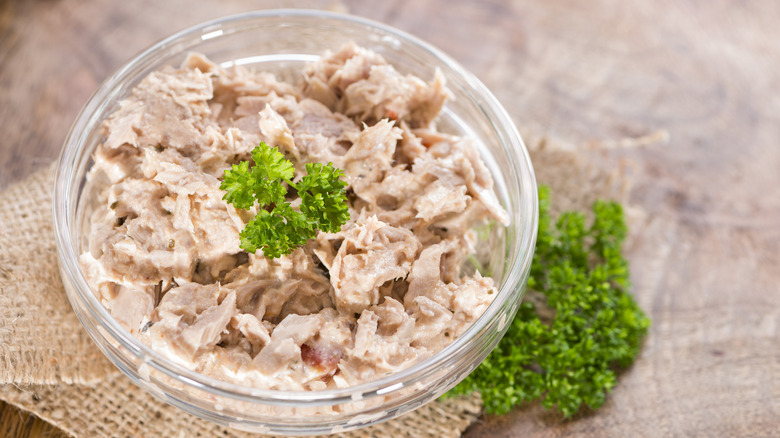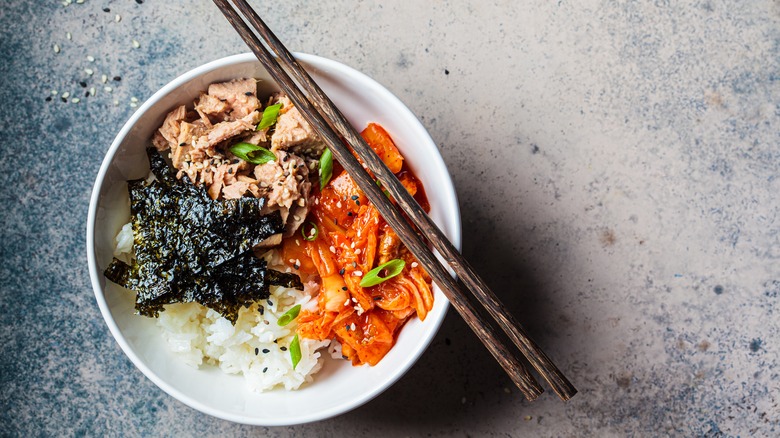Give Tuna Salad A Kick With One Fermented Ingredient
We may receive a commission on purchases made from links.
Tuna salad can be forgettably ordinary or totally exciting, so if you are in the mood to take plain tuna salad to the next level, you need to try adding some kimchi. It brings a salty, tangy, spicy, and umami-packed punch to canned tuna, and because the fish is so meaty, it can definitely stand up to the bold flavors. You may be familiar with baechu kimchi made from Napa cabbage — like the products from Shark Tank's Mama O's Premium Kimchi — but there are many different varieties. Cucumbers and radishes are popular, but any number of vegetables, fruits, and even seafood can be brined and fermented in the same way.
Some standard supermarkets carry kimchi, but you will find the best variety at Asian markets that focus on Korean goods. Go for products that contain dried shrimp, fish sauce, or anchovies to play up the oceanic notes of the tuna, or opt for plant-based products for a less intense flavor profile. Sweet and smoky Korean pepper flakes called gochugaru are a common ingredient in kimchi, and give it both heat a bright red color — you can find both mild and fiery products to suit your preferences.
Simply chop up your kimchi of choice into bite-size pieces, and mix it into your tuna salad. Kimchi actually goes very well with both a creamy mayonnaise base and a more acidic take. For mayo-free kimchi tuna salad, pair it with rice vinegar, a touch of sesame oil, and a splash of kimchi brine to bring it all together.
How to serve kimchi tuna salad
You can enjoy this kimchi tuna salad any way you would eat a more basic version, but you can also play off of the unique flavors and make really thoughtful pairings. Serve it between slices of squishy milk bread, or scoop this tuna up with sesame rice crackers and coins of fresh cucumbers. It is also delicious on top of a leafy green salad dressed with soy sauce, gochugaru, and rice vinegar with plenty of sesame seeds and scallions.
Kimchi tuna salad is also great with short grain rice. The warm grains and cool salad create a delightful contrast. Or, use kimchi tuna salad as a filling for Korean kimbap. Though not a traditional filling, the briny seaweed and rice seasoned with salt, sugar, sesame oil, and vinegar pair really nicely with the spicy tuna. As kimbap is meant to showcase a variety of colors, flavors, and textures, consider pairing the tuna salad with ingredients like julienned raw carrots, pickled yellow radish, cucumbers, and sliced egg omelet. It takes a little finesse to nail the technique, but the result is well worth the effort.


